Two Hammocks |
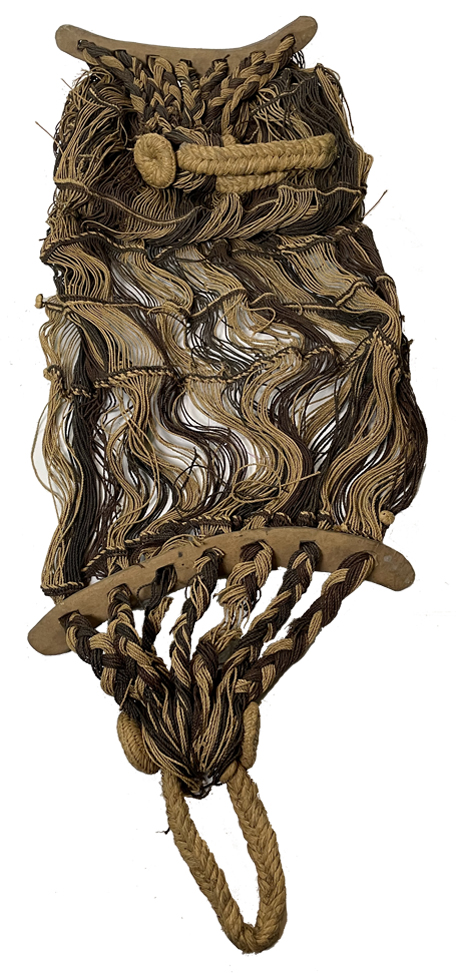
Fiber_007052 Liberia, early 20th century Fiber, Wood Yoke to Yoke 7 ft 1/2 in (2 m 14.6 cm); End to End 8 ft 7.5 in (2 m 62.9 cm) private collection of Walter Logan Fry |
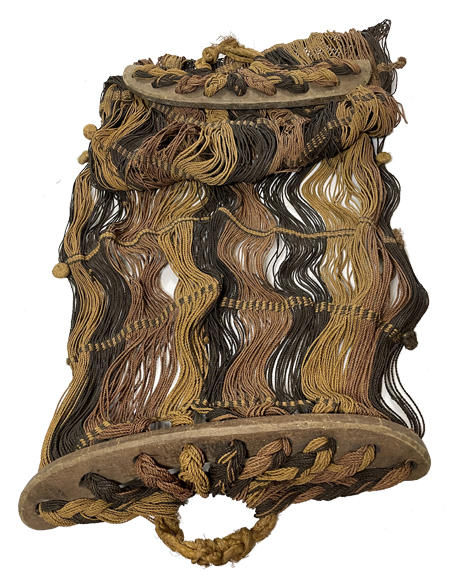
Fiber_007053 Liberia, early 20th century Fiber, Wood Yoke to Yoke 6 ft 3 in (1 m 90.5 cm); End to End 7 ft 9 in (2 m 36 cm) private collection of Walter Logan Fry |
Hammocks woven from bundles of twisted raffia cord. The bundles are laid flat and held in place with bands of three, four or eight pairs of interlaced weft cords, each pair interlaced with two warp cords. In these hammocks, these bands of weft cords are woven at intervals of varying lengths, here seven to 16 inches apart. The bundles of the warp cords are alternately either natural in color, or dyed with brown or red dyes extracted from various native plants, including from nut husks, tree bark and leaves. The bundles pass through holes drilled into gently curved wooden yokes at each end. The ends of the bundles then loop back, and the incoming bundles are braided with the outgoing bundles. They pass back through the yokes, forming loops outside of the yokes at each end. Ropes or quenqis pass through all of the end loops. If quenqis are used, they enter the end loops from opposing directions, with grass knots at each end to hold them tightly in place. Whether ropes or quenqis are used, they create a single outer loop that can be affixed to ropes or hooks so the hammock can be hung or carried. In the photos above, the top hammock uses quenqis, while the bottom hammock uses ropes. Additional quenqis are shown at the bottom of this page. Chieftans and persons of high status were often carried in these hammocks as a principle mode of transportation. Barbara Johnson, in Four Dan Sculptors, related that Ldamie, the master brass caster of the Dan, became so rich and famous in his later years, that he was carried in hammocks, and "never had to walk again." Images of high status men being carried in hammocks are included among Ldamie's brass castings. For comparison, below is a hangmat (hammock) in the collection of the Stichting Nationaal Museum van Wereldculturen, Rotterdam, The Netherlands. Notice the quenqis at the ends of the hammock. |
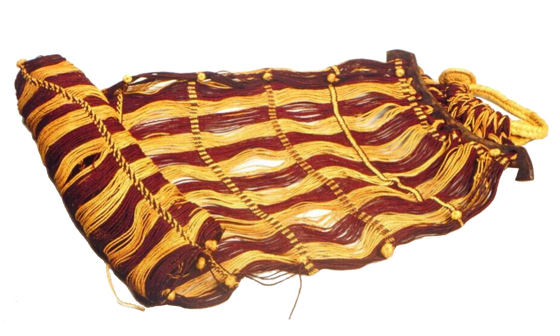
"Hangmat (Hammock)" |
The British Museum has a number of hammocks from Ivory Coast and Liberia, The hammock below from Liberia is of a similar design as the hammocks in the Fry collection, and the color pathways are similar. |
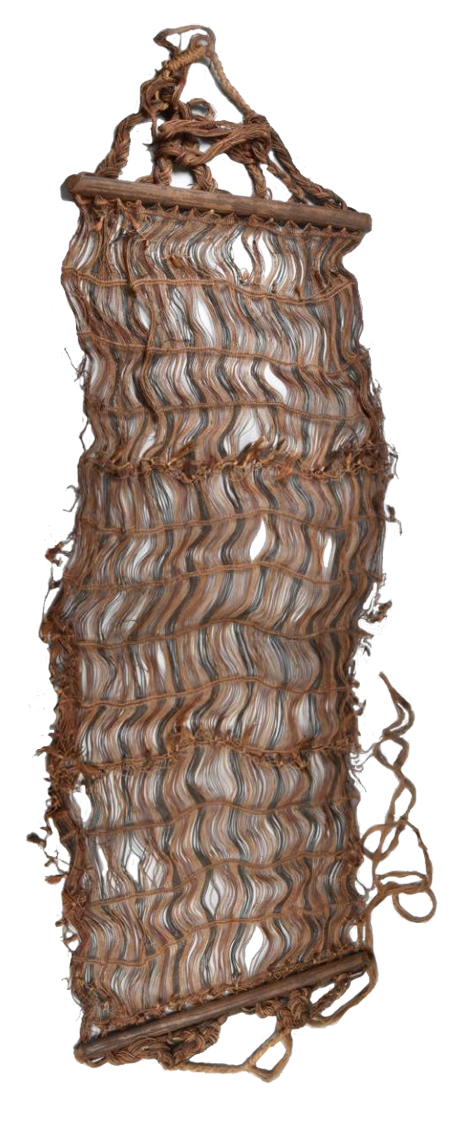
Quenqis |
A quenqi is a device to suspend hammocks and other hanging objects. They are made of grass and have large knobs at each end. In the case of hammocks, they enter the end loops from opposing directions, with grass knots at each end to hold them tightly in place. They create an outer loop that can be affixed to ropes or hooks so the hammock can be hung or carried. In the photos below, the two top quenqis have been cut sharply with a knife or razor. A possible reason would be that they were so tightly fixed in the object they suspended, that cutting was the only possible method of removal. |
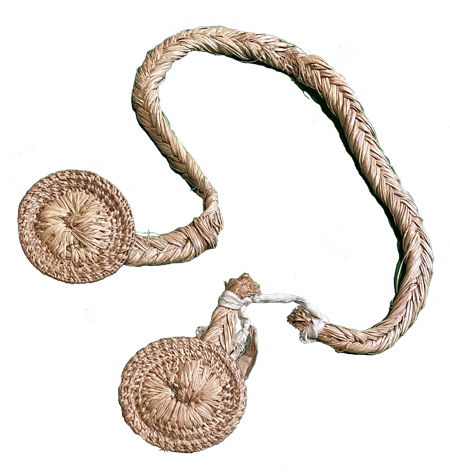
Quenqi; Liberia; early |
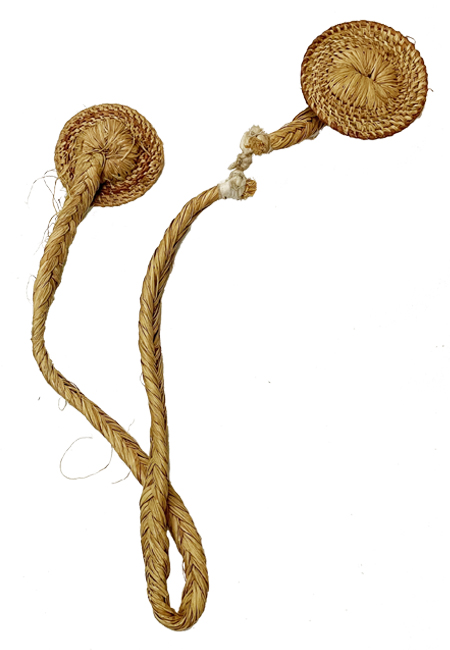
Quenqi; Liberia; early |
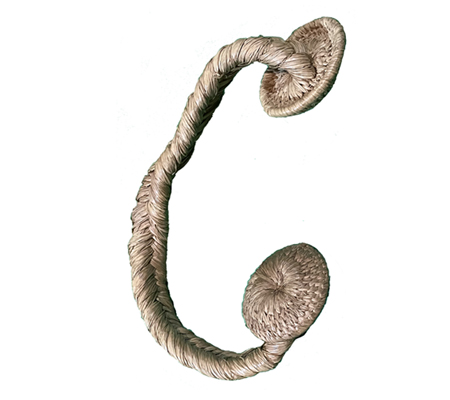
Quenqi; Liberia; early |
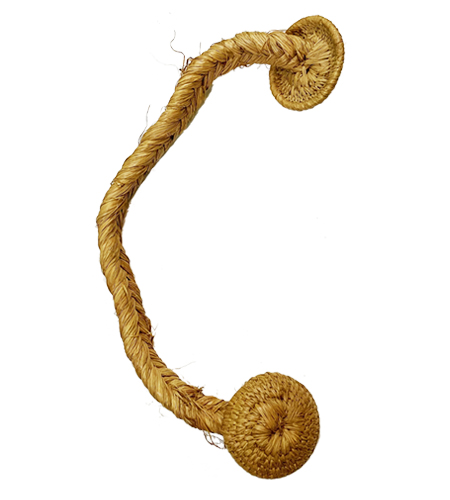
Quenqi; Liberia; early |
Personal note: I had been trying to find a word for these objects, and the best I could find were descriptions. Then, in the morning of September 18, 2023, before awaking, I had a dream in which the word came to me. This is the word and definition, exactly as I dreamed it: "Quenqi [also sp. kwenki]: a grass rope with a knob at each end, used for suspending hangmats [hammocks].” Other researchers are welcome to provide a better word, or use this word for their own work.
|